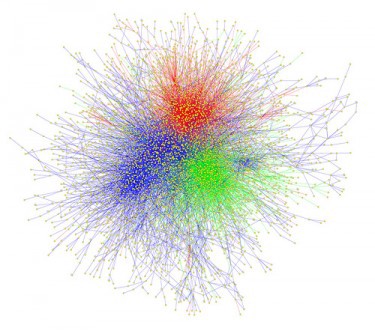Everything I Didn't Learn From Taking A Personal Genome Test
Everything I Didn’t Learn From Taking A Personal Genome Test
by Russell Brandom

It took us ten years and $3 billion to map the human genome, and when the first working draft appeared in 2000, it came with lots of predictions: We were going to crack the genetic code for disease, predict heart attacks and cure cancer. Twelve years later, that isn’t how it worked out.
Instead of dramatic scientific breakthroughs, the most successful outgrowth has been a crop of VC-fueled personal genetics companies. The concept is simple: for a fee, they’ll tell you everything science knows about your genes. The most popular American version is 23andme, which has been around since 2006 and getting gushing press for nearly as long. Thanks to a good pitch and some Google connections (co-founder Anne Wojcicki is married to Google co-founder Sergey Brin, who steered $3.9 million of Google’s money into the project, and has personally loaned the company $10 million), they’ve been able to raise as much money as they’ve ever needed, a sum total of $52.6 million, as of last January. (Along the way, that’s been enough money to fly their own zeppelin around northern California.)
All of which means that, for $200 you can send off a tube of spit to a 23andme lab in California and get access to a website with literally thousands of statistics about your genome, each somehow just a little short of being a useful fact. A few examples, from my own results.
— My odds of heroin addiction are 2.9x higher than average. It’s hard to know what this means: do I get a bigger kick out of opiates, or a smaller one? The finding is based on a Swedish study from 2004, but on the results page, 23andme also helpfully links to a 2006 study that they list as “contradictory,” so maybe it doesn’t mean anything at all.
— I’m a carrier for hemachromatosis. This actually is useful to know. 3% of the population are carriers for a genetic disorder of one kind or another, often something terrifying and degenerative like PKU or Gracile. But not me. I just have the possibility of extra iron in my blood, which hopefully (hopefully!) some doctor would have told me about at some point anyway.
— I have a 33% higher risk of rheumatoid arthritis. It’s hard to know what this means. This figure is derived from a group study, showing that people with this gene (my gene) suffer rheumatoid arthritis at a rate of 3.2% instead of 2.4%. That may mean a lot to an insurance actuary, but for a single person, it comes close to nonsense. If I lived one thousand times, I would suffer arthritis in 32 lives instead of 24 — a useless, maddening idea. I won’t live a thousand times. I have only one body and only one life. Either it will happen or it won’t.
23andme’s test results are all based on peer-reviewed scientific studies, the closest thing medicine has to a rock-hard, build-your-house-on-it fact. But once they’re translated from the group to the individual level, it’s hard to say what significance these facts actually have. This is what science-in-progress looks like — a tangle of half-tested ideas, each one raising more questions than it answers. Anyone waiting to unlock the mysteries of the human body best not hold their breath.

Unfortunately, the genome itself is anything but user-friendly. After a decade of research, our data is a jumble of conflicting facts, and no one seems ready to make sense of it. The best metaphor comes from Duke geneticist Misha Angrist, author of Here Is A Human Being and Participant #4 of the Personal Genome Project. “It turns out to be just a total fucking mess. So instead of having this linear icon representing human biology, the most potent symbol now is the hairball.”
In other words, it’s all tangled up in there. Take height, for example. We know that tall parents have tall kids, but if you start looking for specific segments of DNA, you’ll find over a thousand, none of which contribute more than a millimeter. The top 180 genetic markers still only account for 10 to 12 percent of the height variation from person to person. The rest of the story refuses to be pinned down. Brilliant people have spent years staring at these numbers, unable to sort them into any kind of rational order, even though to the untrained eye, there seems to be no mystery at all. Tall mom, tall dad: tall kid. But the closer we look, the less we understand.
So when sites like 23andme try to lay out all that messy, incomprehensible data for mass consumption, they’ve got quite a problem on their hands. They don’t have any straightforward truths to offer users, just a flood of vague and often frightening ambiguities. But wherever there’s a gap between what they promise and what they can deliver, 23andme fills it with social media. The site’s full of Like buttons, Share buttons, disease groups, Foursquare-style research badges, and comment boards, ready to answer (or at least listen to) any question. One user posted in the Research Discoveries forum: “I’ve heard there is a connection between having creased ear lobes and heart disease. If there is a connection, is it a function of lifestyle or genetics?” No one left any clarifying comments; perhaps he’ll never know. Another woman, upon discovering she’s a carrier for Familial Mediterranean Fever, responded with a simple “:(“
It’s medical science as MetaFilter thread, pouring all the information into a big pile on the floor and letting the community sort it out. Any confused question will eventually be met with a reasonable answer from someone doing their best to sounds authoritative. (From the freckling forums: “It is a good idea to stay out of the Sun as much as possible.”) You can even imagine it comforting someone — not like seeing a doctor, necessarily, but like meeting a fellow sufferer in the waiting room. They don’t know any more than you do, but at least they don’t seem troubled by it.
That quasi-professionalism is important because it gives the site a sense of authority, which it may or may not have earned. The American Medical Association has been critical of the entire idea of personal genetics for just this reason. They don’t want genetic data in the hands of anyone who isn’t a doctor, which has been enough to get the service banned in New York State. (I had to have my sample routed through family in Pennsylvania.) When they look at the jumble of data, they see a threat — both to easily befuddled patients and genetic counselors about to be innovated out of a job.
In the meantime, the hairball shows no signs of growing less tangled. Science can be stubborn, especially if you’re building a business around it, and in the case of personal genetics, it’s hard to know when we’ll have enough genetic data to make sense of our DNA. The messy incomprehensibility may be around as long as we are.
Russell Brandom started at Buzzfeed last week. He makes a mean lentil stew. Top image by isaravut, via Shutterstock; second image by Lander BMC Biology 2010.
